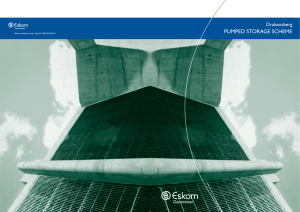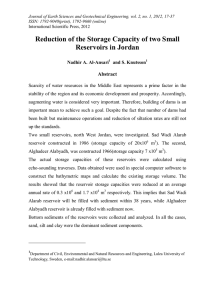1.138J/2.062J/18.376J, WAVE PROPAGATION Fall, 2004 MIT
advertisement
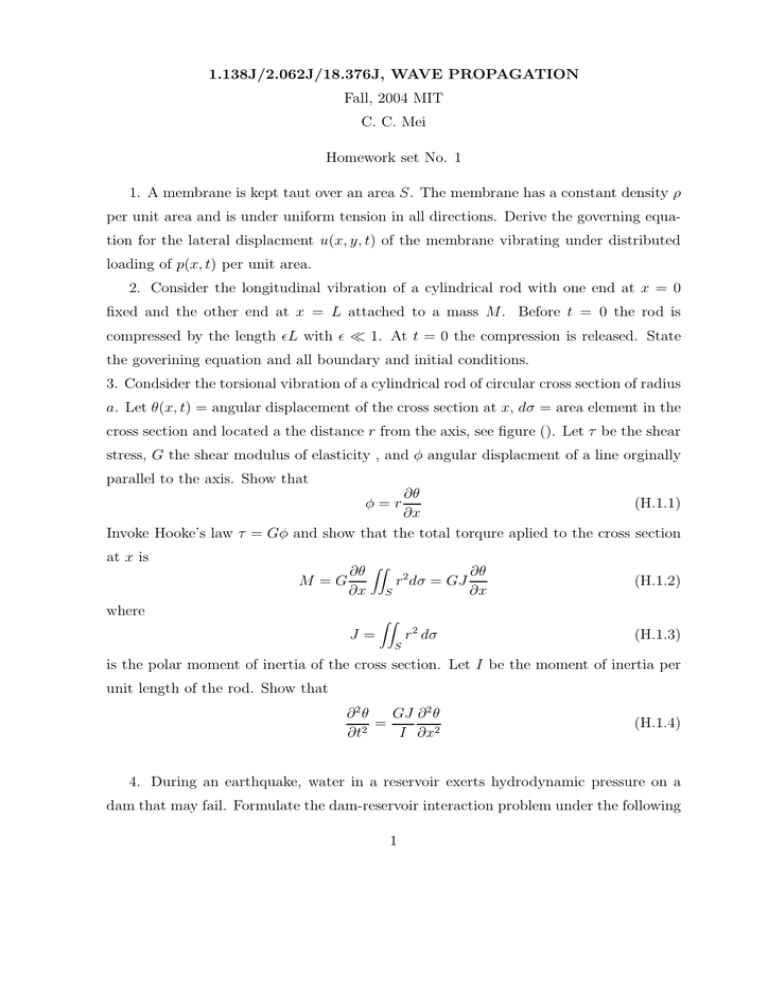
1.138J/2.062J/18.376J, WAVE PROPAGATION Fall, 2004 MIT C. C. Mei Homework set No. 1 1. A membrane is kept taut over an area S. The membrane has a constant density ρ per unit area and is under uniform tension in all directions. Derive the governing equa­ tion for the lateral displacment u(x, y, t) of the membrane vibrating under distributed loading of p(x, t) per unit area. 2. Consider the longitudinal vibration of a cylindrical rod with one end at x = 0 fixed and the other end at x = L attached to a mass M. Before t = 0 the rod is compressed by the length L with 1. At t = 0 the compression is released. State the goverining equation and all boundary and initial conditions. 3. Condsider the torsional vibration of a cylindrical rod of circular cross section of radius a. Let θ(x, t) = angular displacement of the cross section at x, dσ = area element in the cross section and located a the distance r from the axis, see figure (). Let τ be the shear stress, G the shear modulus of elasticity , and φ angular displacment of a line orginally parallel to the axis. Show that ∂θ (H.1.1) ∂x Invoke Hooke’s law τ = Gφ and show that the total torqure aplied to the cross section φ=r at x is ∂θ M =G ∂x where r 2 dσ = GJ S J= S r 2 dσ ∂θ ∂x (H.1.2) (H.1.3) is the polar moment of inertia of the cross section. Let I be the moment of inertia per unit length of the rod. Show that ∂2θ GJ ∂ 2 θ = ∂t2 I ∂x2 (H.1.4) 4. During an earthquake, water in a reservoir exerts hydrodynamic pressure on a dam that may fail. Formulate the dam-reservoir interaction problem under the following 1 z dσ A A’ φ A r a A’ dθ y x O Figure 1: Torsion of a circular cylinder idealizations. The reservoir is infinitely long and has a uniform rectangular cross section. Water is present only on one side of the dam (x > 0) and has the constant depth h. Before t = 0, all is calm. After t = 0 the dam is forced to vibrate horizontally so that u(0, y, z, t) = uo (x, y, t) = prescribed, 0 < t < T, 0, (H.1.5) t > T. The free surface is exposed to constant atmospheric pressure. The reservoir bottom is rigid and does not vibrate vertically (What an idealization!!!). Neglect gravity but consider compressibility of water because of the high frequency (∼ O(100)Hz). Express all governing equations including the boundary conditons in term of the velcoty potential φ defined by (u, v, w) = ∇φ. Show in particular that 1 ∂2φ = ∇2 φ 2 2 C ∂t 2 (H.1.6)


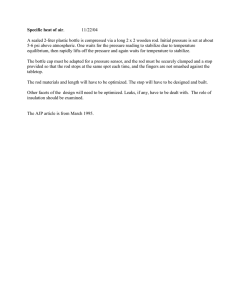

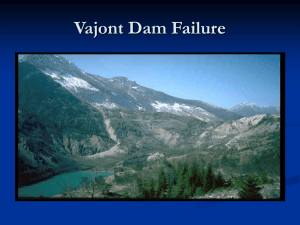
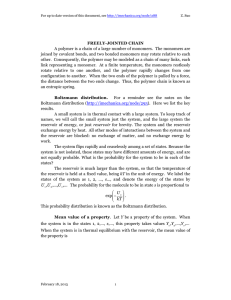
![R14 Vajont_Dam_failure[1].doc](http://s2.studylib.net/store/data/015465365_1-3d807b5ec39cbbbef8455e573e06f568-300x300.png)
